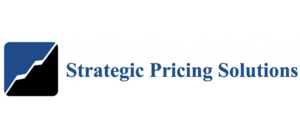Blog
I seem to have received an extraordinary number of requests lately to complete customer satisfaction surveys. Some have been only one question and some have been 10-minute surveys. The goals of the companies requesting my survey participation are generally to improve their service delivery and build customer loyalty. Both are good goals. Unfortunately, if the […]
The availability of data and tools to analyze them have increased significantly over the past few years. Many companies have added pricing analytics capabilities and have purchased new data visualization tools. Those are steps that can improve profitability, if they are focused on the right pricing analyses. Unfortunately, too many companies spend their time creating […]
In 2016 we saw several examples of companies raising prices rapidly and causing an uproar in the process. Classpass canceled their subscription to unlimited boutique fitness classes, What The Hell Is Going On With Classpass?. Also Mylan, Valeant, and Turing were all in the news for substantially raising the prices of popular drugs. In fact, they were all called to testify before Congress and were scolded for their actions. Their customers are and have been actively looking for alternatives. These few examples do not mean you should forego price increases or be timid about them; but they do mean you should be thoughtful in the process. Make sure your pricing strategy is multi-dimensional and includes steps to limit your risks when raising prices.
The first step in setting defendable price increases is to avoid having across-the-board common price increases. No matter what price increase percentage you pick, you run the risk of being too high for certain products, and you will definitely miss opportunities on other products. Other elements to consider include:
Now that Donald Trump has been elected to be the next President of the United States, companies are looking at his campaign promises and cabinet appointments to assess what it means for their business. In particular, companies are anxious about how a Trump Presidency will affect their cost of doing business. This is all happening at a time when many companies are setting their base prices for 2017. My advice is to remember that pricing is not a cost-based exercise. Your pricing strategy should be aligned with how you compete and how you provide value to your customers. Consider whether your customer’s perception of value could change, and if so by how much. Let that guide you in setting prices.
The year 2016 is almost over. All businesses should reflect on what has worked, and what has not worked; and they should be prepared to adjust in 2017. That evaluation should include reviewing the results of decisions made regarding pricing strategies and tactics. Equally important, the evaluation should be rigorous and thorough, and there should be no sacred cows. Regardless of who made the decision(s) or which customers were affected, the choices should be evaluated with a goal of making continuous improvements.
After getting raked over the coals by Congress earlier this year, Mylan is preparing to release a generic version of their EpiPen, Mylan To Start Selling $300 Generic EpiPen Pack Next Month. The price of the generic will be roughly half the price of the brand name EpiPen. That raises obvious questions like, “How will […]
Today is Halloween, but it is no time to be spooked by the challenge of increasing prices to fully capture the value of your products or services. In nearly every company, opportunities exist to capture more value from select customers or products. However, those opportunities are often not where you think they are, so do your due diligence. Avoid chasing the ghosts of phantom opportunities.
In many companies, pricing attention is driven by the 80/20 rule. That is, roughly 80% of the volume comes from 20% of the customers. Companies look at those large customers that deliver a disproportionate amount of sales to determine if there are opportunities to raise prices. It certainly seems easier to manage fewer customers and prices, and they can get more leverage out of small price increases. However, the companies then conclude they can’t raise prices because “We are locked into contracts”, or “We don’t want to cause the customers to put everything out for bid.” Unfortunately, that is not a good application of the 80/20 rule. Very often there is more money to be made in managing the long tail of prices to smaller customers and low-volume products.
Last month I read an article, How Amazon’s Pricing Algorithm is Designed to Hurt Consumers, that implied Amazon is not as customer focused as they claim. The article said that the online retailer does not always have the lowest-priced item first in their results list, and therefore is trying to take advantage of their customers. I disagree. What Amazon is doing is aligning their merchandising and pricing strategies. They are trying to sell more products by delighting their customers, and they are trying to make more money in the process. Isn’t that the point of retail?
When you shop in any physical retail store, you can see the merchandising choices the retailer has made. The products that have the most prominent placement, which makes them most likely to be seen, are seldom the least expensive products. In simple terms, they are usually products that either drive more traffic or generate more gross margin per foot of space. The store layout is also designed to encourage customers to spend more. In some cases, that means moving high-demand items to the rear of the store so that customers flow through the aisles and are tempted by other items on the way. It can also mean spreading the most recognized brands widely within a section to encourage more browsing. Rarely does it mean putting the lowest-priced items closest to the doors.
Lou Gerstner recently wrote an op-ed for the Wall Street Journal, The Culture Ate Our Corporate Reputation, in which he discussed corporate leaders blaming their culture for poor performance. In the article, Gerstner wrote that leaders were missing the critical component of culture that people do what you inspect, not what you expect. The corporate processes, not just words, need to reflect the corporate priorities; and compensation is a big part of those processes. In other words, you get what you pay for.
In many companies, pricing is a microcosm of processes not matching the words. Over the years, I have talked with many companies who state that they want to improve profitability by being more strategic in their pricing. Their strategic plans and business plan refer to competing with differentiated products and services, and pricing to customer value. Those principles and goals are communicated to all employees, and sometimes the companies invest in new analytics or build new tools to help. But they experience limited to no success in improving profitability. One of the reasons for this lack of success is the companies never adjust their compensation schemes to reflect these priorities.
September is nearly ended and we are preparing to start the 4th quarter of the calendar year. For many companies, it is also the final quarter of the fiscal year. Similar to sports teams, whether you have a lead or are trying to catch up, winning in the 4th quarter often determines whether you win or not for the full year. That often means a big push to meet or exceed targets by finishing the year strong. Focus and effort are critical, and strategic pricing concepts can help you determine which customers to target. More specifically, you can use the insight from your pricing analytics to help you be more efficient and productive. That insight can also help you make decisions that won’t come back to haunt you next year.
A fairly simple way to identify higher value targets is to think about your customers in terms of how many products they need or could buy, and how price sensitive their behavior tends to be. You can plot your customers and prospects on a simple grid like Figure 1, and prioritize according to the grid. The quadrants can be categorized as High Priority; Good, Not Great; Caution; and Avoid.








